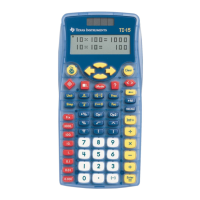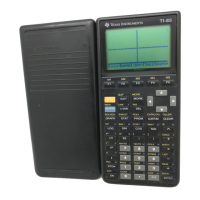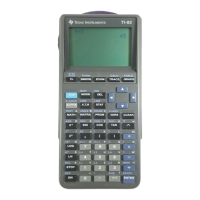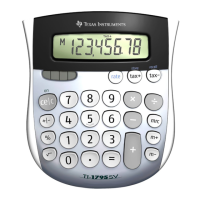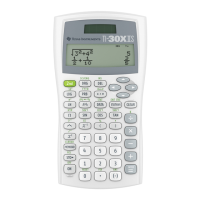comDenom(6*x^5-8*x^4+2*x^3,y)
which, in AUTO and EXACT modes, returns
2 $ x
3
$
3 $ x
2
− 4 $ x + 1
In APPROX mode, a different but equivalent expression is returned:
6 $ x
3
$
x
2
− 1.333$ x + 0.333
The User's Guide suggests defining a function to accomplish this:
comDenom(expr,exprvar)→comden(expr)
and adds:
"Even when there is no denominator, the comden function is often a fast way
to achieve partial factorization if factor() is too slow or if it exhausts memory.
"Hint: Enter this comden() function definition and routinely try it as an
alternative to comDenom() and factor()."
[2.24] Infinity^0 evaluates to 1
The TI-89/TI-92+ CAS evaluate infinity to the zero power as one. In general, x^0 is 1, for x not equal to
zero, however, since infinity is not a number, the usual rules of arithmetic do not necessarily apply.
Different CAS systems may return different results, for example, the HP-49G considers the result
undefined or 1, depending on flag settings, and the HP-48, Mathematica and Maple all return 1.
One plausible rational for setting is that
∞
0
= 1
lim
xd0
1
x
x
= 1
however, 1/x is not infinity, it is undefined.
There are actually different 'degrees' of infinity. A denumerably infinite set is equivalent to the set of all
natural numbers. The German mathematician Georg Cantor defined an infinite set as one which can
be put in one-to-one correspondence with a proper subset of itself. Cantor denoted the 'size' of a
denumerably infinite set as which is called aleph-null, aleph-zero, or aleph-naught. aleph is the first
ß
0
letter of the Hebrew alphabet. There are larger infinite sets, which are not in one-to-one
correspondence with the set of natural numbers. These are designated and so on.
ß
1
,ß
2
,ß
3
...
Aleph-zero, aleph-one and so on, are called the cardinal numbers of infinite sets, where each set has a
higher degree of infinity. These cardinal numbers are called transfinite numbers. If you are interested in
learning more about transfinite numbers, I recommend chapter 7 of Mathematics from the Birth of
Numbers, by Jan Gullberg, as an easy introduction. Unfortunately, Cantor's ideas were so radical that
he encountered intense criticism from his peers, suffered from nervous breakdowns, and died in a
mental institution. Cantor proved these results:
ß
0
+ ß
0
= ß
0
ß
0
2
= ß
0
2
ß
0
= ß
0
ß
0
> ß
0
In any event, the TI-89/TI-92+ give this warning:
2 - 16

